Distributed Energy Resource Management System Market Size
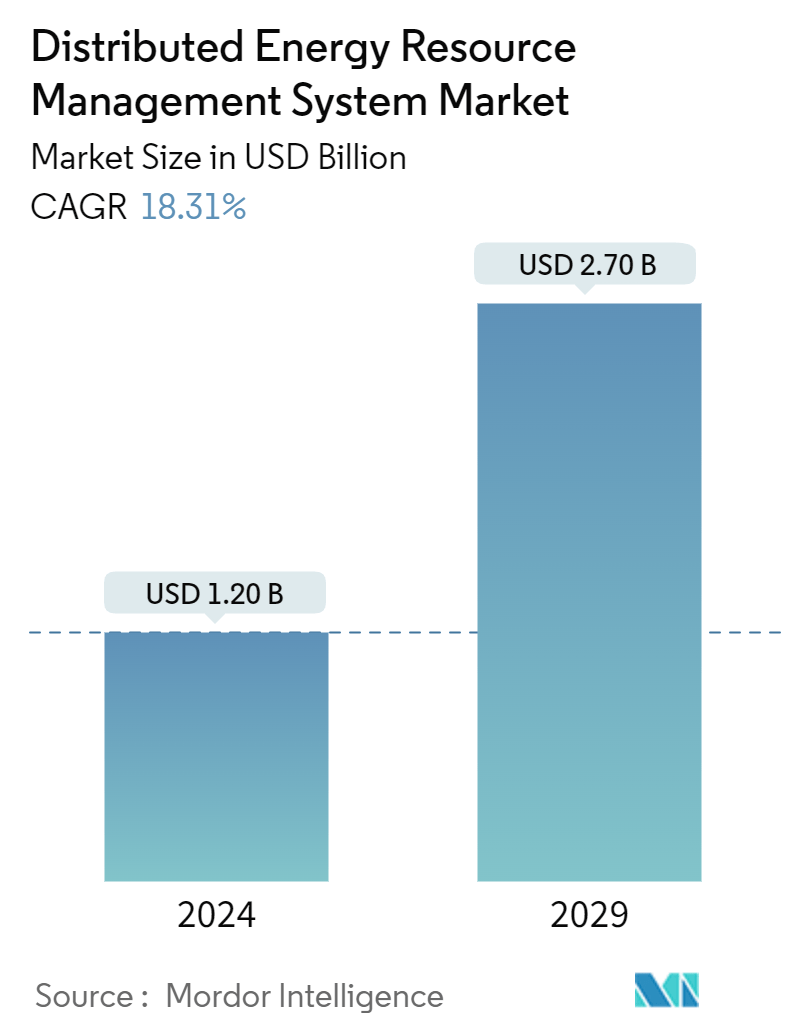
| Study Period | 2019 - 2029 |
| Market Size (2024) | USD 1.20 Billion |
| Market Size (2029) | USD 2.70 Billion |
| CAGR (2024 - 2029) | 18.31 % |
| Fastest Growing Market | Asia Pacific |
| Largest Market | North America |
Major Players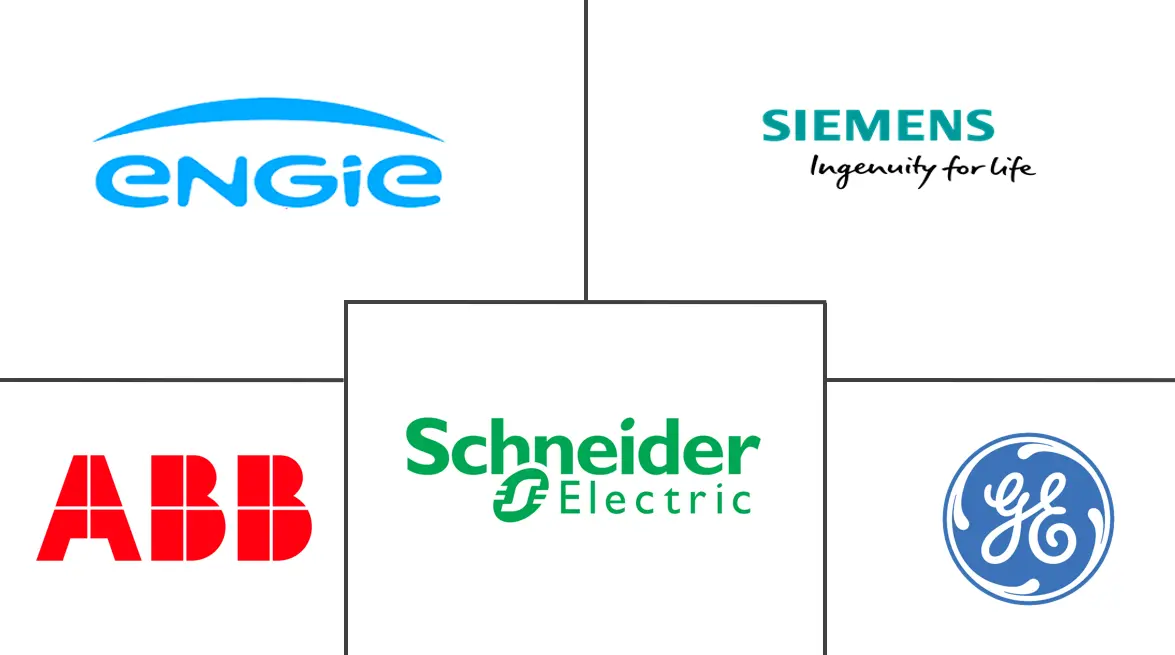
*Disclaimer: Major Players sorted in no particular order |
Need a report that reflects how COVID-19 has impacted this market and its growth?
Distributed Energy Resource Management System Market Analysis
The Distributed Energy Resource Management System Market size is estimated at USD 1.20 billion in 2024, and is expected to reach USD 2.70 billion by 2029, growing at a CAGR of 18.31% during the forecast period (2024-2029).
- Over the medium term, factors such as an increasing shift toward renewables-based distributed power generation and rising investments in smart grid are expected to be some of the most significant drivers for the distributed energy resource management system (DERMS) market during the forecast period.
- On the other hand, there is a high initial cost of setting up DERMS. This may pose a threat to the distributed energy resource management system (DERMS) market during the forecast period.
- Nevertheless, the adoption of distributed power generation in the low-electrified areas of Asia-Pacific and Africa and the development of microgrids as a service are expected to act as opportunities in the market.
- North America is expected to be the largest market during the forecast period, owing to supportive government policies for distributed power generation technology and the increasing share of renewables in the energy mix.
Distributed Energy Resource Management System Market Trends
Solar Photovoltaic (PV) Segment to Dominate the Market
- Solar PV can be located on rooftops or ground-mounted and is one of the largest distributed power sources globally. This segment is expected to drive the distributed energy resources management system with increased installed capacity supported by decreasing average installed cost (USD/kilowatt). Distributed energy resource management systems limit real-time photovoltaic (PV) output to prevent reverse flows and high local voltages.
- Distributed generation is economically viable, requiring significantly less capital than an equivalent traditional facility. Tax incentives for both solar stations and distributed solar generation are driving distributed solar PV globally.
- According to the International Renewable Energy Agency, the global solar PV installed capacity accounted for 1,046.61 GW in 2022. With an annual growth rate of 22.4% compared to the previous year and supportive solar PV targets of the government, solar PV capacity is expected to increase in the future, which, in turn, may drive the distributed energy resource management system market.
- Solar photovoltaic (PV) technology is expected to account for renewables’ most considerable annual capacity additions in the coming years, well above wind and hydro as well. According to IEA, solar PV generation increased by 26% in 2022, reaching 1300 TWh, representing the largest absolute generation growth of all renewable technologies. The cost of solar photovoltaics has also reduced dramatically in the past six years as the market was flooded with equipment. The cost of solar panels also dropped exponentially, leading to increased solar PV system installations globally.
- In the residential and commercial & industrial (C&I) sector, solar power is often generated by rooftop solar photovoltaics (PV) deployed by end users. Solar PV systems for power generation are installed on rooftops of houses and commercial buildings or industrial plants that use the energy. Excess energy produced by individual owners is sometimes sold to power companies.
- Several governments around the world have introduced several initiatives and policies to increase the contribution of solar energy to the country’s energy mix. Such policies are expected to have a positive impact on the market studied. For instance, in India, the Ministry of New and Renewable Energy announced the Grid-connected Rooftop Solar Scheme (Phase II) in 2019. The scheme aims to produce solar power by installing solar PV panels on the roofs of houses. The Government of India previously set the goal of installing 40,000 MW of Rooftop Solar (RTS) Power by 2022.
- However, in January 2023, India's Rooftop Solar (RTS) program received a four-year extension and aimed to accomplish its target of 40 GW rooftop solar (RTS) capacity addition by March 2026. This program is expected to achieve India's total solar energy capacity target significantly.
- Therefore, with increased investment in solar PV and changing government regulations, coupled with upcoming projects, the solar PV segment is expected to be the largest market during the forecast period.
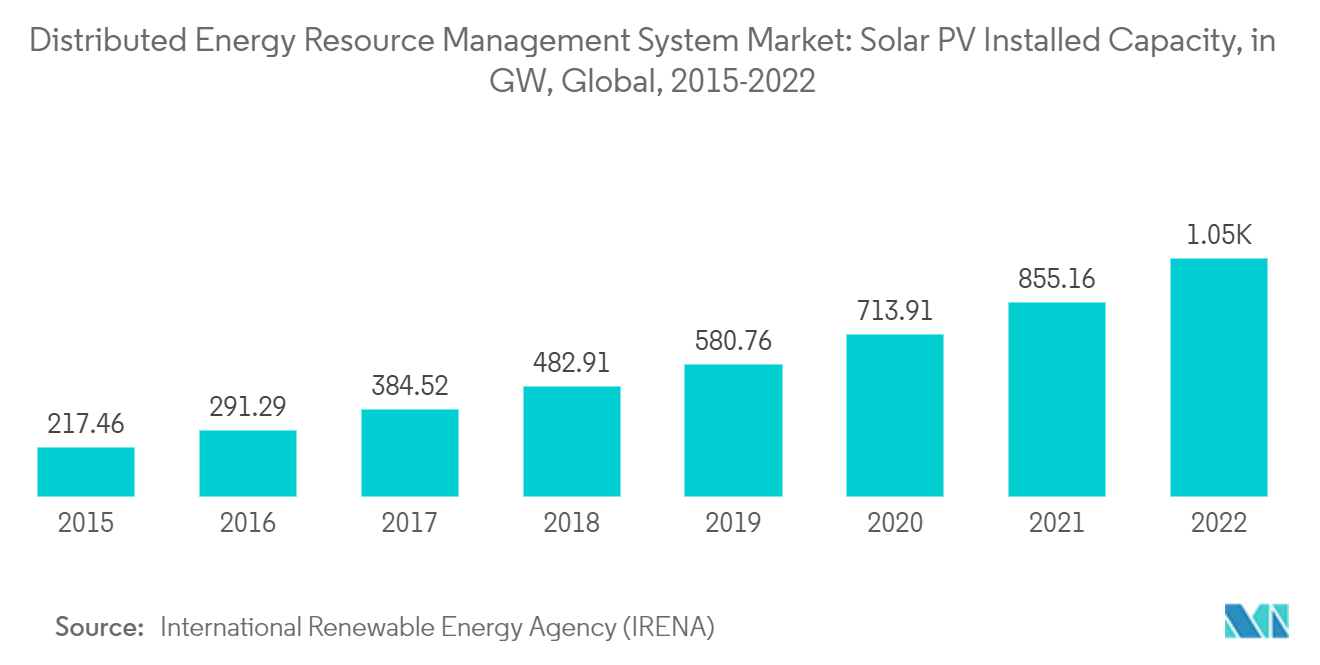
North America to Dominate the Market
- The North American DERMS market is further expected to be the largest market during the forecast period, supported by the United States and Canada, which have more than a million distributed generation units.
- Despite enough power generation and accessibility of transmission and distribution networks, power outages are caused in some areas of the region due to natural disasters, such as flooding and storms. The use of remote power systems, such as DERMS, to regulate distributed energy systems is likely to mitigate the issue.
- The United States has set a road map to achieve renewable energy targets. The federal government and many state governments have implemented policies and programs to promote the adoption of solar energy. These incentives include tax credits, grants, rebates, and renewable portfolio standards that need utilities to receive a certain percentage of their energy from renewable sources like solar.
- Moreover, as the number of solar projects increases, the companies increase demand for distributed energy resources management systems in the country.
- According to the US Energy Information Administration (EIA), the country’s small-scale solar capacity grew from 7.3 GW in 2014, when they began publishing these estimates, to 39.5 GW in 2022. Small-scale solar accounts for approximately one-third of all solar capacity in the United States.
- According to the International Energy Agency (IEA), electric vehicle sales in the country have increased significantly in recent years between 2021 and 2022; the cumulative sales of PHEV and BEV increased by more than 27,000 units, whereas in the past decade, sales increased by almost 60 folds signifying the increasing adoption of electric vehicles in the country.
- Similarly, Canada's publicly available electric vehicle (EV) charging infrastructure is on a steady rise, as indicated by data compiled by Electric Autonomy. As of March 1, 2023, Natural Resources Canada (NRCan) statistics revealed that Canadian EV users can avail themselves of at least 20,478 charging connectors distributed across 8,732 charging station sites nationwide. This represents a substantial percentage growth rate of 30% since the beginning of 2022.
- Therefore, based on these factors, North America is likely to be the largest market for distributed energy resource management systems during the forecast period.
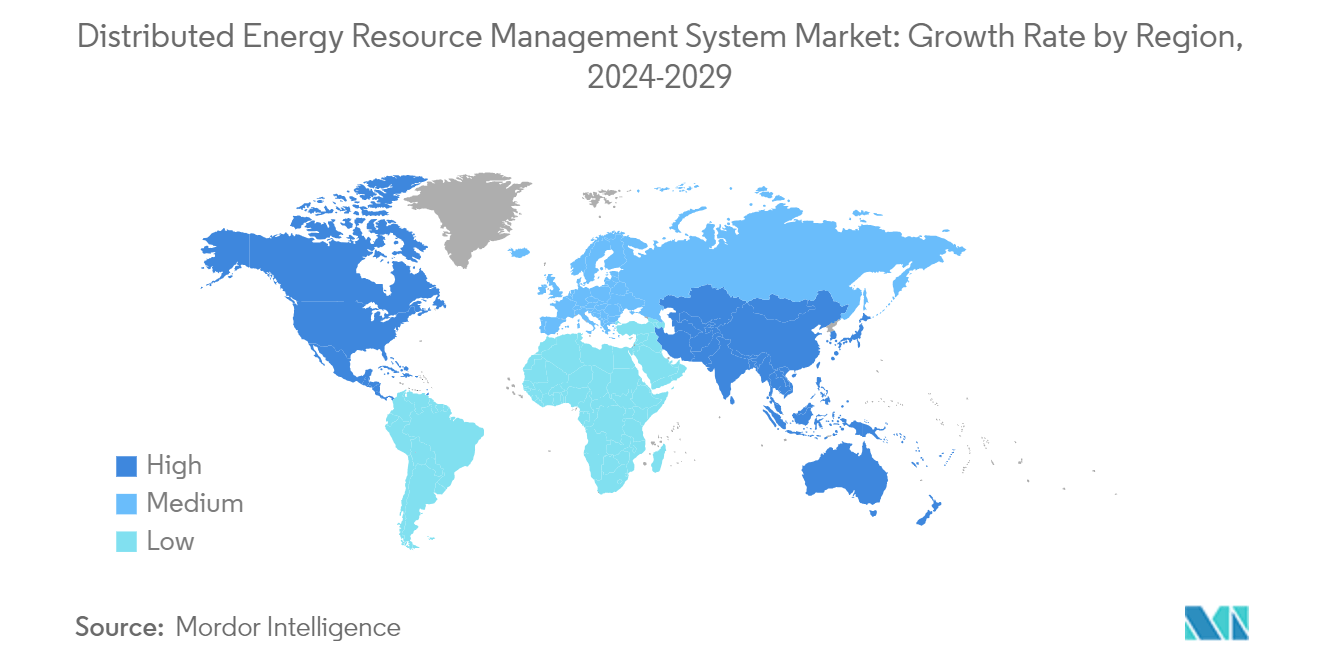
Distributed Energy Resource Management System (DERMS) Industry Overview
The distributed energy resource management system market is semi-fragmented. Some of the major players in the market (in no particular order) include General Electric Company, Siemens AG, ABB Ltd, Schneider Electric SE, and Engie SA.
Distributed Energy Resource Management System Market Leaders
Engie SA
General Electric Company
Siemens AG
Schneider Electric SE
ABB Ltd
*Disclaimer: Major Players sorted in no particular order
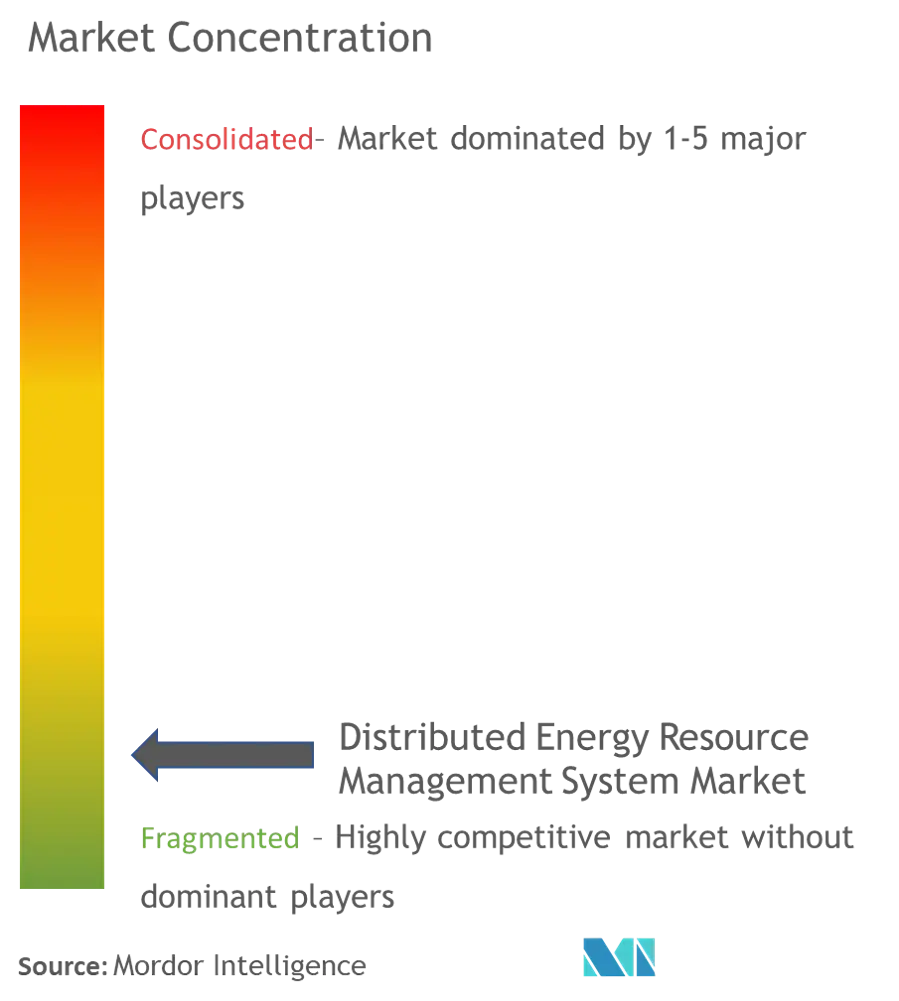
Distributed Energy Resource Management System Market News
- February 2024: According to the N.C. Clean Energy Technology Center (NCCETC), a total of 774 grid modernization actions were taken in more than fifty states in 2023. The top trend in grid modernization includes the growing interest in virtual power plants, cost recovery for interconnection upgrades, examining the impacts of wholesale market participation, studying long-duration energy storage, utilities proposing new performance incentive mechanisms, undertaking grid resilience planning, utilities pursuing pilot programs and projects, utilizing green button standards for access to customer energy usage data, providing customers with demand response incentive opportunities, and utilities exploring opt-out time-varying rates.
- January 2024: According to a renewable report of IEA, the world’s capacity to generate renewable electricity is expanding faster, providing an opportunity to achieve the goal of tripling global capacity by 2030 that governments set at the COP28 climate change conference last month. The amount of renewable energy capacity added to energy systems grew by 50% in 2023, reaching almost 510 GW, with solar PV accounting for three-quarters of additions globally.
- April 2023: Alloy.ai, a software platform, announced the launch of new features that make it the first demand and inventory control tower designed specifically for consumer brands. The Alloy.ai application is built on a data platform that automatically aggregates, harmonizes, and synchronizes point-of-sale (POS) data from all of a company's retail and e-commerce channels with inventory and internal supply chain data from ERP systems.
Distributed Energy Resource Management System (DERMS) Market Report - Table of Contents
1. INTRODUCTION
1.1 Scope of the Study
1.2 Market Definition
1.3 Study Assumptions
2. EXECUTIVE SUMMARY
3. RESEARCH METHODOLOGY
4. MARKET OVERVIEW
4.1 Introduction
4.2 Market Size and Demand Forecast, till 2029
4.3 Recent Trends and Developments
4.4 Government Policies and Regulations
4.5 Market Dynamics
4.5.1 Drivers
4.5.1.1 Increasing Shift Toward Renewables-based Distributed Power Generation
4.5.1.2 Rising Investments in Smart Grid
4.5.2 Restraints
4.5.2.1 Expansion and Upgradation of Centralized Grid
4.6 Supply Chain Analysis
4.7 Porter's Five Forces Analysis
4.7.1 Bargaining Power of Suppliers
4.7.2 Bargaining Power of Consumers
4.7.3 Threat of New Entrants
4.7.4 Threat of Substitute Products and Services
4.7.5 Intensity of Competitive Rivalry
5. MARKET SEGMENTATION
5.1 By Technology
5.1.1 Solar Photovoltaic (PV)
5.1.2 Electric Vehicles
5.1.3 Microgrids
5.1.4 Other Technologies
5.2 By End User
5.2.1 Industrial
5.2.2 Residential
5.2.3 Commercial
5.3 By Geography
5.3.1 North America
5.3.1.1 United States
5.3.1.2 Canada
5.3.1.3 Rest of North America
5.3.2 Europe
5.3.2.1 Germany
5.3.2.2 Italy
5.3.2.3 France
5.3.2.4 United Kingdom
5.3.2.5 Rest of Europe
5.3.3 Asia-Pacific
5.3.3.1 India
5.3.3.2 China
5.3.3.3 Japan
5.3.3.4 South Korea
5.3.3.5 Rest of Asia-Pacific
5.3.4 South America
5.3.4.1 Brazil
5.3.4.2 Argentina
5.3.4.3 Rest of South America
5.3.5 Middle East and Africa
5.3.5.1 United Arab Emirates
5.3.5.2 Saudi Arabia
5.3.5.3 Saudi Arabia
5.3.5.4 Rest of Middle East and Africa
6. COMPETITIVE LANDSCAPE
6.1 Mergers and Acquisitions, Joint Ventures, Collaborations, and Agreements
6.2 Strategies Adopted by Leading Players
6.3 Company Profiles
6.3.1 General Electric Company
6.3.2 Siemens AG
6.3.3 ABB Ltd
6.3.4 Schneider Electric SE
6.3.5 Oracle Corporation
6.3.6 Uplight Inc.
6.3.7 Doosan Corporation
6.3.8 Open Access Technology International Inc.
6.3.9 Mitsubishi Electric Corporation
6.3.10 Emerson Electric Co.
6.3.11 Engie SA
- *List Not Exhaustive
7. MARKET OPPORTUNITIES AND FUTURE TRENDS
7.1 Micro Grid As A Service
Distributed Energy Resource Management System Industry Segmentation
A distributed energy resources management system (DERMS) is a platform that helps distribution system operators (DSO) manage their grids, which are primarily based on distributed energy resources (DER).
The distributed energy resource management system (DERMS) market is segmented by technology, end user, and geography. The market is segmented by technology into solar photovoltaic (PV), electric vehicles, microgrids, and other technologies. By geography, the market is segmented into North America, Europe, Asia-Pacific, South America, and Middle East and Africa. By end user, the market is segmented into industrial, residential, and commercial. The report also covers the market size and forecasts across major regions. For each segment, the market sizing and forecasts were made based on revenue (USD).
| By Technology | |
| Solar Photovoltaic (PV) | |
| Electric Vehicles | |
| Microgrids | |
| Other Technologies |
| By End User | |
| Industrial | |
| Residential | |
| Commercial |
| By Geography | |||||||
| |||||||
| |||||||
| |||||||
| |||||||
|
Distributed Energy Resource Management System (DERMS) Market Research FAQs
How big is the Distributed Energy Resource Management System Market?
The Distributed Energy Resource Management System Market size is expected to reach USD 1.20 billion in 2024 and grow at a CAGR of 18.31% to reach USD 2.70 billion by 2029.
What is the current Distributed Energy Resource Management System Market size?
In 2024, the Distributed Energy Resource Management System Market size is expected to reach USD 1.20 billion.
Who are the key players in Distributed Energy Resource Management System Market?
Engie SA, General Electric Company, Siemens AG, Schneider Electric SE and ABB Ltd are the major companies operating in the Distributed Energy Resource Management System Market.
Which is the fastest growing region in Distributed Energy Resource Management System Market?
Asia Pacific is estimated to grow at the highest CAGR over the forecast period (2024-2029).
Which region has the biggest share in Distributed Energy Resource Management System Market?
In 2024, the North America accounts for the largest market share in Distributed Energy Resource Management System Market.
What years does this Distributed Energy Resource Management System Market cover, and what was the market size in 2023?
In 2023, the Distributed Energy Resource Management System Market size was estimated at USD 0.98 billion. The report covers the Distributed Energy Resource Management System Market historical market size for years: 2019, 2020, 2021, 2022 and 2023. The report also forecasts the Distributed Energy Resource Management System Market size for years: 2024, 2025, 2026, 2027, 2028 and 2029.
Distributed Energy Resource Management System Industry Report
Statistics for the 2024 Distributed Energy Resource Management System market share, size and revenue growth rate, created by Mordor Intelligence™ Industry Reports. Distributed Energy Resource Management System analysis includes a market forecast outlook to for 2024 to 2029 and historical overview. Get a sample of this industry analysis as a free report PDF download.
